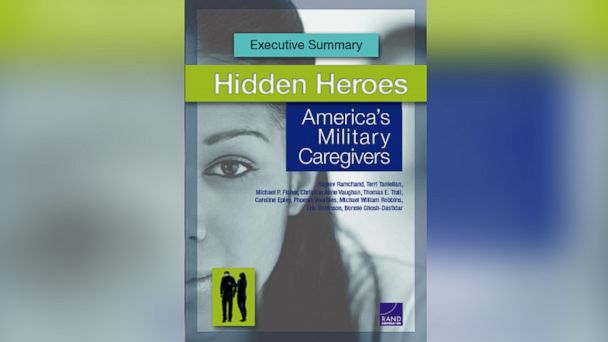Snapshot of the Post-9/11 Caregiver

(Amazon.com)
The following numbers are drawn from the Rand Military Caregivers Study:
- There are 1.1 million post-9/11 caregivers.
- 59 percent are female.
- 37 percent are under between 18-30.
- 49 percent are between 31-55.
- 57 percent are white. Twenty-one percent are Hispanic. Ten percent are African -American.
- 33 percent are spouses of the person they're caring for.
- 25 percent are parents of the person they're caring for.
- 23 percent are friends or neighbors of the person they're caring for.
- In 15 years, experts see increased risk of people needing to find alternative care as parents age or pass away.
- 32 percent of post-9/11 caregivers have a 70 percent-or-higher rating of how severely disabled their loved one is.
- If you're the spouse of a caregiver, you're spending on average 14 hours a week more on caregiving than other caregivers.
MORE: T he Unsung Heroes Behind the Wounded Warriors
On the need to offset income loss:
- Rand has only identified three programs that offset income loss - one through the Veterans Administration, one through the Department of Defense, one from a non-profit organization.
- Missed work for post-9/11 caregivers annually costs $5.9 billion.
- 28 percent of post-9/11 caregivers quit their jobs altogether.
- 16 percent of post-9/11 caregivers moved to a job that was better at accommodating for their schedule but paid less.
- 39 percent cut back on hours.
- 48 percent took unpaid time off from work.
- On average, they're missing 4 days a month.
On the need to expand health coverage, including mental health coverage, for post-9/11 caregivers:
- 28 percent of post-9/11 caregivers have no usual source of health care.
- 31 percent of post-9/11 caregivers have received care from a mental health professional in the past year.
- 84 percent found that counselling somewhat or very helpful.
- Roughly two-thirds of caregivers with probable depression have not received care from a mental health professional in the past year.
- 38 percent of post-9/11 caregivers met the criteria for a probable major depressive disorder.
- Post-9/11 military caregivers had roughly five times the odds of meeting the criteria for probable depression and scored an average of 19 points higher on anxiety symptoms than non-caregivers.
On the need for expanded respite care for caregivers:
- Rand identified only nine organizations that provide respite care, including public and private organizations.
- The Lifespan Respite Care Act of 2006 authorizes Congress to spend approximately $288 million between fiscal years 2007 and 2011 to help family caregivers access affordable and high-quality respite care. Since 2009, only $2.5 million has been allocated annually to the program.
- The number of hours people spend per week giving care correlates with increased risk of in depression.
- 12 percent of post-9/11 caregivers spend 40 hours per week or more providing care.
- 5 percent of post-9/11 caregivers spend 80 hours a week or more.
- 20 percent of post-9/11 caregivers say they have used respite care.